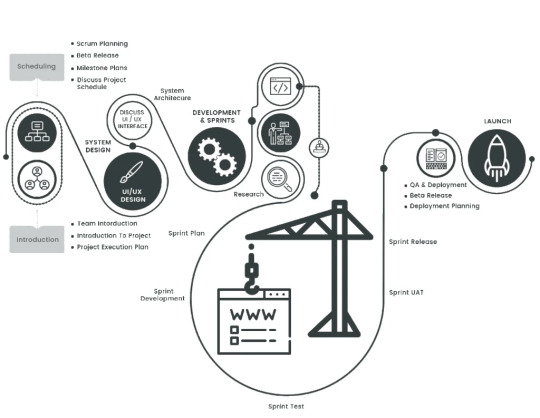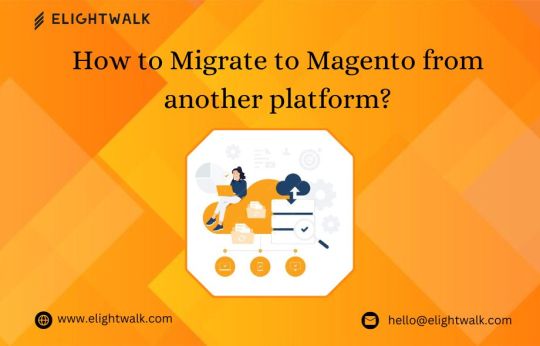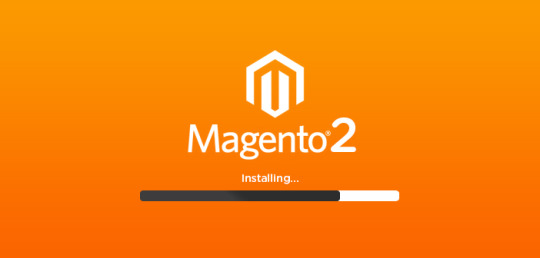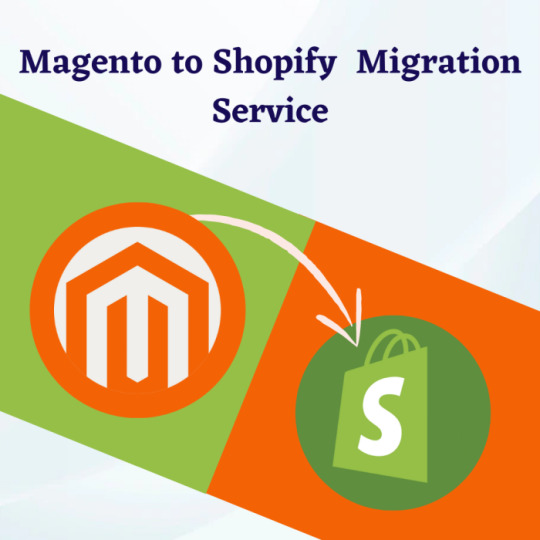#magento 2 migration
Explore tagged Tumblr posts
Text
Looking for a trusted Magento 2 migration company? Evrig is a leading Magento migration agency, helping you seamlessly upgrade from Magento 1.x to Magento 2.x. Ensure a smooth, secure transition with our expert team. Contact us today to get started!
#magento 2 migration company#magento migration agency#magento development agency#magento ecommerce development company#magento web development company#magento 2 development company#magento ecommerce development services#best magento development company#magento consulting companies#magento ecommerce consulting#hire magento migration expert#magento 2.2 migration services#magento migration company#magento 2 code migration#magento code migration#magento 2 migration#magento 1 to shopify migration
0 notes
Text
Magento 2 Upgrade Services | VTNetzwelt
Magento 2 upgrade services involve the process of migrating an eCommerce store from the Magento 1 platform to the more advanced Magento 2. This upgrade is essential for keeping your online store secure, performance-optimized, and equipped with the latest features. Magento 2 upgrade services encompass data migration, extension compatibility, and design transition, ensuring a smooth and efficient transition. By leveraging these services, businesses can enhance their eCommerce capabilities, improve user experiences, and stay competitive in the ever-evolving digital landscape.
#magento 2 upgrade service#magento 2 migration#magento latest version#magento 2 data migration#magento 2 extension development#magento web development#magento integration services#dynamics nav magento integration#cutom magento extension development#magento functional testing framework#magento migration services#magento extension development services#magento extension development company
0 notes
Text
0 notes
Text
How to Migrate a Store from Shopify to Magento?
Migration from Shopify to Magento is a huge leap for your business, offering it more flexibility, scalability, and advanced features. Though this might seem daunting, having a clear roadmap for making this transition will ease the process. The following is a step-by-step guide to help in successfully migrating:
1. Understand Why You’re Migrating
First of all, before one dives in, understand why Magento is a destination point. Yes, Shopify was perfect for simplicity and ease, but Magento means advanced personalization, better scalability, and robust features. If your current platform starts to limit growth, your Magento 2 Migration will be the cool thing to do.
2. Plan and Prepare Your Data
Start by auditing your Shopify store. After auditing is completed, the Shopify merchant may need to make a note of data to migrate, which would involve details related to a product, customers, orders, and the site's content. Clean up your data-remove all outdated and duplicate entries, to keep data from becoming a disaster later on. In that way, everything will go just smoothly when migrated, and the shop could be arranged more organizedly at Magento.
3. Set Up Your Magento Store
Install Magento on a decent hosting platform or take the help of a hosting service dedicated to Magento. After that, configure some basic settings such as tax rules, currencies, and store language. Choose a theme for Magento that will represent your brand identity and customize it for seamless user experience.
4. Export Data from Shopify
Shopify provides an export facility of data into CSV format. In your Shopify admin, go to the export section and download all the required files: products, orders, customer records, etc. Back up your Shopify store to ensure you will not lose any data while migrating.

5. Data Import via Migration Tools
Magento also allows for imports with some tools, which ease the migration of data. You can use extensions for such migrations, like Cart2Cart or LitExtension, which allow automated transfers. This is because the tools will map data fields between Shopify and Magento to reduce human-induced errors.
6. Test Your Magento Store
Perform a full test of your fresh Magento store before going to production. Verify that every piece of data has migrated correctly and all product descriptions, image captions, and customer details are correct. Ensure your payment gateways, shipping methods, and checkouts work flawlessly.
7. Optimize for Performance
Magento offers advanced caching, scalability, and mobile-friendly features. Set these up to enhance the speed of your site and the users' experience. Install SEO extensions to maintain or improve your search rankings post-migration.
8. Launch Your Store
When everything is tested and optimized, switch your domain to Magento. Keep your customers informed about the migration process, emphasizing the benefits of the new platform, whether it be a better shopping experience or exclusive features.
9. Monitor and Improve
After going live, monitor your store's performance and user feedback. Address any issues quickly and continue optimizing your Magento store to align with your business goals.
Migration to Magento can be rather labor-intensive and take a long time, but the payoff in terms of customization, performance, and scalability is there. If you plan properly, this transition will lay a foundation for your business's success in the long run.
For More information, please visit: https://mageleven.com/magento-migration-services
4 notes
·
View notes
Text
Seamless Transition: WordPress to Magento 2 Migration Expertise
Upgrade your e-commerce capabilities with Kiwi Commerce's seamless WordPress to Magento 2 migration services. Our expert team ensures a smooth transition, preserving your data and enhancing your store's performance. Trust us for a hassle-free migration experience, allowing you to leverage the robust features of Magento 2 for a more powerful and scalable online store.

0 notes
Text
Seamless Magento to Shopify Migration for Enhanced eCommerce
Ensure a smooth transition from Magento to Shopify with expert migration services. Minimise downtime and preserve data integrity while enhancing your store's performance and user experience. Perfect for businesses looking to upgrade their eCommerce platform, this service guarantees a hassle-free migration process. Elevate your online store with a seamless Magento to Shopify migration.

0 notes
Text
How do we fix the Required parameter 'theme_dir' not passed in magento2?.
Magento Migration Errors: {“0″:”Required parameter ‘theme_dir’ was not passed”,”1″:”<pre>#1 Magento\\Framework\\View\\Design\\Fallback\\Rule\\Theme->getPatternDirs() called at [vendor\/magento\/framework\/View\/Design\/FileResolution\/Fallback\/Resolver\/Simple.php:124]\n#2 Magento\\Framework\\View\\Design\\FileResolution\\Fallback\\Resolver\\Simple->resolveFile() called at…
View On WordPress
#Getting errors when migrate Magento 1 and Magento 2#how to fix required parameter theme_dir error#How to migration from Magento 1 to Magento 2#Magento 2 getting theme_dir error#Magento 2 migration error
0 notes
Text
How to Migrate to Magento from another platform?

Are you considering switching to Magento for your eCommerce business? With its solid features and flexibility, Magento has become a popular choice for online retailers. However, there are important considerations to remember when migrating.
This post will discuss the steps and best practices for migrating to Magento from another platform. We've covered it whether you're on Shopify, WooCommerce, or any other platform. Let's dive into the world of Magento migration and set you up for eCommerce success.
1. Assessment and Planning:
Evaluate your current platform: Understand your existing platform's features, data structure, and functionalities.
Identify what data needs to be migrated: Products, customers, orders, categories, content, and any custom data.
Analyze your Magento requirements: Determine the version of Magento you want to migrate to and what features you need.
2. Choose the Right Migration Method:
Manual Migration: Manual migration might be feasible if you have a small store with limited data.
Automated Migration: Consider using automated migration tools or services for larger stores with significant data. Various third-party migration tools are available to migrate data from different platforms to Magento.
3. Prepare Your Magento Environment:
Install Magento: Set up a new Magento instance on your local machine or a server.
Customize your Magento installation: Configure settings, install necessary extensions, and customize the theme to match your branding and requirements.
4. Data Migration:
Products: Export product data from your platform and import it into Magento. Ensure that product attributes and categories are mapped correctly.
Customers: Migrate customer data, including accounts, passwords, addresses, and order history.
Orders: Transfer order data such as order details, status, and payment information.
Content: Move static pages, blog posts, images, and other content to Magento.
5. Design and Theme Migration:
If you're redesigning your store, create or customize a Magento theme to match your desired design. Ensure the layout, navigation, and user experience are consistent with your previous platform.
6. Integration and Customization:
Integrate any third-party services or extensions you used on your previous platform. Develop custom functionalities or extensions to meet specific requirements not covered by default Magento features.
7. Testing:
Thoroughly test your Magento store's migrated data, functionalities, and user experience. Check for any data discrepancies, broken links, or functionality issues. Conduct user acceptance testing to ensure that everything works as expected.
8. Launch and Post-Migration Activities:
Once testing is successful, schedule the launch of your Magento store. Redirect traffic from your old platform to the new Magento site. Monitor the site closely after launch and address any issues promptly. Update your SEO settings, analytics tracking, and other configurations as needed.
9. Training and Support:
Train your team on using the Magento admin panel and managing the store. Provide continuing help to resolve any queries or difficulties that occur upon migration.
10. Optimization and Maintenance:
Monitor and optimize your Magento store for performance, SEO, and user experience. Keep Magento and extensions updated with the latest security patches and updates. Regularly back up your store data to prevent data loss.
Following these 10 steps and best practices, you can simplify the migration process and successfully transition to Magento for your e-commerce store.
#magento migration#Magento 2 Data Migration#Magento 2 Upgrade#Woocommerce to Magento 2 Migration#Magento Extension Migration
1 note
·
View note
Text
Unlock the full potential of your B2B Magento store with Magento Hyvä Theme integration. Experience faster load times, improved SEO, and enhanced user experience. Hyvä themes offer modern design, reduced complexity, and optimized performance tailored for B2B needs. Ideal for businesses seeking a scalable and efficient solution, Hyvä streamlines front-end development and delivers a seamless shopping experience that drives conversions and customer satisfaction.
#magento hyva theme#magento hyva theme development#magento hyva theme development services#hyva theme development services#hyva theme integration#magento 2 hyva theme#magento development company#hyva theme development company#magento development services#hyva theme magento 2#Magento Hyvä Theme development services#hire magento 2 developers#Magento Hyvä theme development services#Magento Hyvä theme#best Magento development company#Magento Hyvä Theme integration#Magento Hyvä theme integration#Magento store migration#Migrate magneto store
0 notes
Text
How to upgrade Magento version 2?
Upgrading your Magento store? Sounds like a plan! Jumping onto the latest Magento version can improve your store’s security, speed, and cool new features. This upgrade Magento gig might seem a tad overwhelming, especially if you need to be deeper into the platform’s nitty-gritty. This complete guide on how to upgrade Magento will hand-hold you through the whole shebang—from backing up your store…

View On WordPress
#custom magento development#Magento#magento 1#Magento 2#Magento 2 Extensions#Magento 2 Migration service#Magento cloud development
0 notes
Text
Seamless Transition: Elevate Your Business with Expert Magento to Shopify Migration Services| Webiators
Embarking on a journey from Magento to Shopify is a strategic move that can elevate your online business to new heights. As the e-commerce landscape evolves, ensuring a smooth and efficient migration is paramount.

Why Consider Magento to Shopify Migration:
1. Enhanced User Experience (UX):
Shopify offers a user-friendly interface and streamlined design, providing a more intuitive shopping experience for your customers.
2. Simplified Management:
Benefit from Shopify's user-friendly admin panel, making product management, order processing, and inventory tracking more efficient.
3. App Ecosystem:
Explore a vast array of Shopify apps to add new functionalities and features to your online store, enhancing its overall performance.
4. Mobile Responsiveness:
Shopify is inherently mobile-responsive, ensuring your online store looks and functions seamlessly across various devices.
Key Points for a Successful Migration:
1. Data Migration:
Safely transfer product data, customer information, and order history from Magento to Shopify migration to maintain business continuity.
2. SEO Preservation:
Implement 301 redirects to preserve SEO rankings and ensure a smooth transition without losing search engine visibility.
3. Theme Customization:
Choose a Shopify theme that aligns with your brand identity and customize it to maintain a consistent look and feel for your customers.
4. Payment Gateway Integration:
Set up Shopify's secure and user-friendly payment gateways, ensuring a seamless checkout process for your customers.
5. Testing:
Thoroughly test your new Shopify store to identify and address any potential issues before making it live.
6. Communication:
Keep your customers informed about the migration process to manage expectations and maintain trust in your brand.
How Our Migration Service Can Help:
1. Expert Consultation:
Benefit from our experienced team's insights to plan and execute a successful migration strategy tailored to your business needs.
2. Data Migration Expertise:
Our specialists ensure a secure and accurate transfer of your data, minimizing downtime and avoiding data loss.
3. Customization and Branding:
We help you customize your new Shopify store to align with your brand, ensuring a seamless transition for your customers.
4. Post-Migration Support:
Receive ongoing support post-migration to address any issues and optimize your Shopify store for continued success.
In conclusion, a well-executed Magento to Shopify migration can unlock a world of possibilities for your online business. Trust our expertise to guide you through the process, ensuring a smooth transition and positioning your brand for success in the competitive e-commerce landscape.
Visit : https://store.webiators.com/shopify/magento-to-shopify-migration.html
0 notes
Text
10 Steps for a Successful Magento 2 Migration in 2023 Updated

Magento 1 reached its official end on June 30, 2020, courtesy of Adobe. Once this date arrived, Adobe stopped giving out official updates or helping out with Magento 1 installations. So, if any problems like security issues or bugs show up in Magento 1, you won’t get any help from Adobe. This means websites that still run on Magento 1 might face security problems and might not work well with other software.
The main reason for this end-of-life thing for Magento 1 is to get people to switch to the newer and better Magento 2 platform. Magento 2 runs smoother, has cooler features, and is way better at keeping your stuff safe. Adobe really wants folks who use Magento 1 to move over to Magento 2. That way, they can keep getting help, stay secure, and use all the new things that come out.
Switching from Magento 1 to Magento 2 is a big deal. So, in this article, we’ll also give you a checklist to help you make the move to Magento 2 without any problems.
10 Steps for Your Magento 2 Migration Checklist
Step 1: Assess and Make a Plan
Step 2: Create a Development Space
Step 3: Transfer Your Data
Step 4: Migrate your theme
Step 5: Evaluate Extensions
Step 6: Migrate Customization
Step 7: Setup and Testing
Step 8: SEO Consider
Step 9: Test with Users
Step 10: Launch and Support After Migration
We will understand each step-in detail.
Step 1: Assess and Make a Plan
Before beginning the migration, it’s important to create a well-structured Migration Plan. This involves crafting a project roadmap before initiating any migration process. A migration plan should encompass the following components
Assessing Your Current Magento 1 Store: Let’s start by taking a good look at your current Magento 1 store. We’ll create a complete list of everything it has – extensions, customizations, and themes. Next, we’ll figure out which important functions and features should move over to Magento.
Define the Extent of Migration: Clearly outline the scope of your migration project. Decide whether you’ll be transferring the complete store or only specific sections like products, categories, customer data, orders, and extensions. Prioritize the most crucial elements for migration.
Define migration goal and timeline: Clearly state your migration objectives, whether they involve improving performance, adding more features, or boosting scalability. Create a practical timeline for your migration project, taking into account factors like data complexity, customization needs, and available resources.
Allocate Resources Wisely: Evaluate the resources required for the migration, which may include in-house or external development teams, designers, testers, and project managers. Distribute resources efficiently to guarantee a seamless migration process.
Think About Budget and Expenses: Examine the budget needed for the migration project, taking into account expenses like development costs, purchases of extensions or themes, infrastructure upgrades, and post-migration support. Allocate a budget that matches your migration objectives and guarantees a successful transition.
Evaluate Compatibility of Extensions and Themes: Examine how well your Magento 1 extensions and themes work with Magento 2. Check if there are Magento 2 versions available or look into alternative choices. Take into account the potential loss of specific functions and find suitable replacements, if necessary.
Prepare for Data Transfer: Assess the complexity and volume of the data you’ll be moving, including product catalogs, customer information, and order history. Recognize any data adjustments or cleanup tasks required before the migration. Explore data migration tools or extensions that can simplify this process.
Recognize Customization Needs: Gauge the level of customizations in your Magento 1 store and check if they work with Magento 2. Identify any custom modules, scripts, or integrations that need to be moved or redeveloped. Allocate resources and time accordingly for handling customization migration.
Step 2: Create a Development Space
It’s recommended to establish a dedicated Magento 2 development space where you can carry out the migration and implement required modifications without impacting the live store. Here are the essential steps to create a development environment:
Select Hosting and Environment:
Pick an option using tools like XAMPP or WAMP for Windows or MAMP for macOS.
Ensure that the environment matches Magento 2’s system requirements, including the PHP version, database, and other necessary dependencies.
Install Magento 2:
You can refer to our comprehensive guide on “How to Install Magento 2 via Composer.”
Copy Magento 1 Data (Optional):
Transfer data from Magento 1 if needed.
Install Development Tools (Optional):
Set up any necessary development tools if required.
Enable Developer Mode:
Activate the developer mode.
Install Composer Dependencies:
Install dependencies using Composer.
Configure Web Server and Permissions:
Ensure your web server meets the requirements (Apache 2.4 or Nginx 1.8) and configure permissions accordingly.
Backup Magento 2 Installation:
Make a copy of your Magento 2 setup for safekeeping.
Create a Development Plan:
Develop a migration plan, outlining tasks, timelines, and testing procedures in the development environment.
Step 3: Transfer Your Data
In the Magento 2 migration checklist, the third step involves transferring data. It’s advisable to move critical data like products, customers, orders, and categories from Magento 1 to Magento 2. Make use of data migration tools or extensions to ensure a seamless transfer while maintaining data accuracy. More Info: https://www.evrig.com/blog/10-steps-for-successful-magento-2-migration-in-2023/
0 notes
Text
Magento 2 Migration Service
Magento Certified Developers helps you in migrating your Magento 1. x stores to the current Magento 2.x version and improved features, and functionality. Read more: https://www.vdcstore.com/magento-2-migration-service.html
Price:- $999.00

0 notes
Text

Professional Shopify Website Design and Development in Dubai
Safcodes specializes in Shopify website design and development in Dubai, helping businesses create stunning, user-friendly online stores. Our expert team ensures seamless eCommerce solutions with responsive designs and optimized performance. We build Shopify stores that enhance user experience and drive sales. Whether you're starting fresh or need a redesign, we provide tailored solutions to meet your needs. Elevate your online presence with Safcodes today!
Contact us: +971 52 178 3535 Website: https://safcodes.com/ecommerce-services/shopify-development/
#website development company dubai#web development companies in dubai#Shopify development Dubai#Shopify developer dubai#Shopify development company in Dubai#Shopify to Magento 2 Migration Services Dubai#Shopify web development service in Dubai#Shopify website design and development Dubai
0 notes
Text
How to Switch to Hyva Magento for Better Results
Switching to Hyva Magento gives your store a front-end that is easier to use and more efficient. This tutorial covers installation, configuration, and the advantages of better SEO and faster page rendering when you switch your Magento store to Hyva Magento.

#saas platform development#shopify developer#saas development#saas development services#Hyva Magento#Data migration magento 1 to 2#Magento 1 to magento 2 migration
0 notes